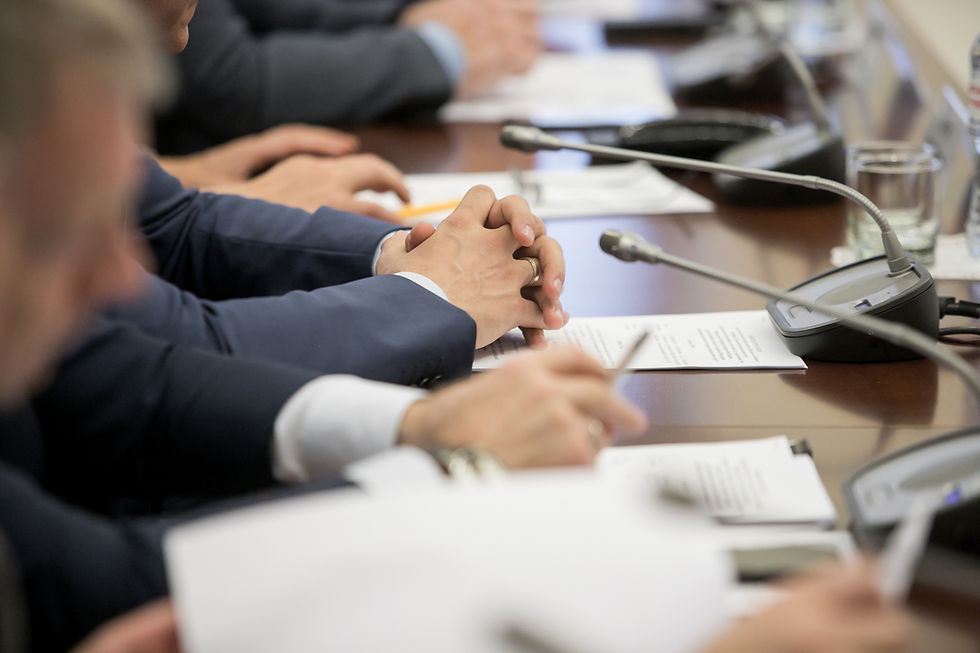West Coast Seafood Guide: Responsibility, Traceability, and Sustainability
- Seaside IT
- Sep 27, 2022
- 3 min read
By: Amanda Davidson

When picking out groceries, dining in or ordering take-out, more consumers want to know whether the ingredients are fresh, thoughtfully prepared, and if it was sustainably sourced. Today, consumers are seeking more than taste in their cuisine, they are curious if it is organic, nonGMO, fairtrade, etc. More often than not, the consumer doesn’t know where their seafood came from, how long it has been dead, or whether it’s on the Red List, managed by the International Union for Conservation of Nature (IUCN) that identifies animals, plants, and fungi at high risk of global extinction. Seaside Sustainability seeks to help consumers bridge the gap in understanding seafood sources and shed light on the ways fishing companies can run their business more responsibly.
The FDA is responsible for ensuring safe food products; unfortunately, when it comes to seafood, illegal, unsustainable, and socially irresponsible practices are going unchecked. The market demand for fish provides lucrative profits regardless of some company’s best efforts to be conscientious in their fishing methods in consideration of oceanic ecosystems. With unregulated products landing in grocery stores, fish markets, and restaurants, it is no surprise that the sustainability of the seafood industry is in question. Large scale fisheries are responsible for the decline of various species of fish, seabirds, turtles, dolphins and sharks due to accidentally catching unwanted animals entangled in the net of the target stock. Additionally, unregulated fisheries are overfishing; causing a depletion of fish stocks.
Certified seafood products such as the blue fish label are awarded by the Marine Stewardship Council (MSC). This international nonprofit has developed a science-based set of standards which they provide to responsible fisheries. Fisheries are assessed on their methods and practices of procurement of their catch. MSC examines evidence of depleted and/or exploited target fish stocks and how well the fisheries manage the environmental ecosystem they procure fish from. They prioritize protecting and maintaining a diverse productivity of the fishery. The fishery must also adhere to international laws and operational regulations. These assessments are performed by a team of accredited independent certifiers every three years; with the intention of incentivising well managed and sustainable fisheries internationally.
While wild-caught seafood accounts for less than 50% of the seafood industry, aquaculture continues to rise in popularity, diverting from overfishing our oceans. Aquaculture seems to be a solution to unsustainable fish products, but poor management of the fish enclosures results in dangerous consequences. Fish who escape the holding tank threaten the biodiversity of other species in surrounding areas. Additionally, these controlled hatcheries are known to produce lower-quality fish due to the fish meal and fish oil diets. Often, this fish meal is a product of key species on the ocean’s lower forage food web, such as bait fish. Antibiotics are used on fish to prevent diseases and infections associated with low-quality egg-to-sale fisheries. Consequently, transmission of antibiotic resistant genes (ARG) into the soil and people consuming these fish is an environmental and human health concern. To ensure these harmful effects from fisheries are prevented, regulations on safe practices are needed for the responsible management of aquaculture.
The system is not perfect, however, conversations on implementing universal transparency in the fishing industry are gaining momentum. According to a representative of Best Aquaculture Practices (BAP), a third-party certification program similar to MSC, implementing guidelines for responsible aquaculture businesses can mitigate some major issues in aquaculture. Businesses voluntarily apply for certification which is becoming more popular among fish farming companies. The BAP program implements the safety checks and audits among fisheries for such practices in their business operations such as proper traceability, environmentally responsible, animal health and welfare, food safety, and social responsibility. Other organizations with similar assessment and certification programs include: the Global Tuna Alliance, which protects tuna from overfishing practices, and the Global Dialog on Seafood Traceability, which promotes responsible chain of custody with goals that include an international traceability system. The incentive is to be part of the solution to unsustainable seafood and help prevent harmful practices that damage oceanic ecosystems. However, large scale production hatcheries face the same ethical issues as wild caught fisheries: levying environmentally harmful methods and potential profits to responsible stewardship of the sea.
Consumers today are shifting their perspective on what it means to be sustainable which means recognizing problematic issues in the seafood industry. The importance of maintaining safe food regulations and sustainable sourcing is spilling over into responsibility in the procurement and sale of seafood. To start contributing to the conversation, start asking restaurants and grocery stores if they serve/sell sustainable seafood. In addition, consider cutting back on eating unsustainable seafood. To know more about which seafood products to avoid, check out the consumer guides at the Monterey Aquarium Bay Seafood Watch website.




